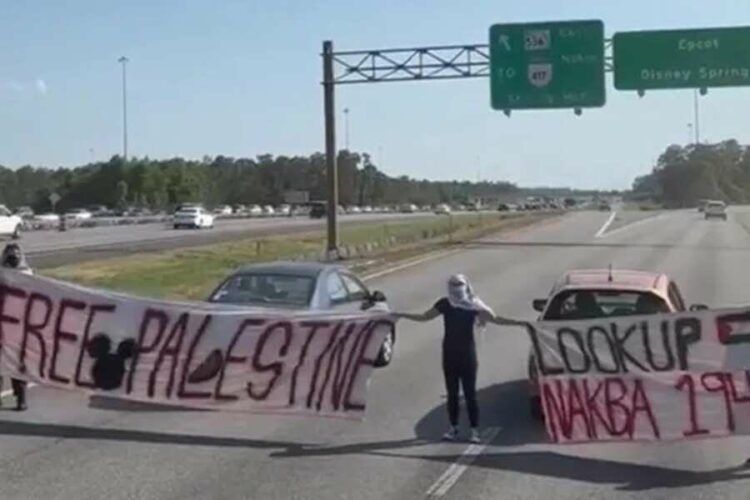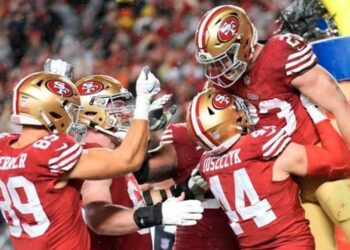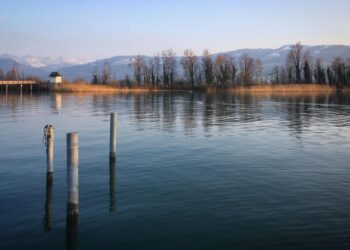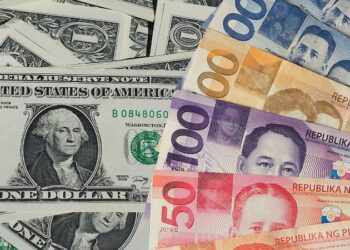On a busy Saturday afternoon, traffic gridlock on Interstate 4 near the globally renowned Walt Disney World in Florida captured more than just the frustrations of delayed tourists and locals. It highlighted a stark manifestation of international political dissent reaching the heart of tourist America. Florida Highway Patrol officers arrested three women—26-year-old Isabella Giannosa, 24-year-old My Truong, and 24-year-old Jenni Nguyen—for blocking traffic while staging an anti-Israel protest.
These individuals found obstructing the westbound lanes of Interstate 4 at Exit 67, were holding signs advocating for Palestinian liberation, a poignant reminder of the enduring and far-reaching impact of the Israeli-Palestinian conflict. Each protester faced charges of a misdemeanor for refusing to obey a police officer, marking a significant albeit contentious moment of civil disobedience.
The scene near Disney Springs was not just a traffic disruption but a visual and vocal call to action. The protesters, all wearing facial coverings to perhaps maintain anonymity amidst a charged political climate, wielded banners with the slogans “Free Palestine” and a more cryptic “Lookup NAKBA 1948,” referencing the Palestinian exodus during the creation of the state of Israel.
The inclusion of a Mickey Mouse emblem between the words “Free Palestine” on one banner starkly juxtaposed beloved symbols of American entertainment with a deeply divisive geopolitical issue, illustrating the protesters’ intent to draw attention from a global audience.
This protest did not occur in isolation. Earlier that day, Orlando Police detained two individuals at a larger demonstration at Lake Eola Park, where approximately 1,200 participants gathered. These arrests were for charges related to battery on a law enforcement officer, suggesting a day fraught with heightened emotions and confrontations. The larger gathering also saw police deploying chemical agents to manage what they described as a “disruptive bunch” within the crowd, further indicating the scale and intensity of the demonstrations.
The choice of location for these protests is particularly significant. By positioning their demonstration at the gates of Walt Disney World, the protesters tapped into a venue symbolizing global unity and childhood joy. The contrast between the venue’s usual atmosphere of escapism and the harsh realities of international conflict could not have been more striking.
It raises questions about the effectiveness and ethics of leveraging such spaces for political expression, especially when it disrupts the lives of those uninvolved in the issues at hand.
The incident has sparked a broader dialogue on the role of public demonstrations in tourist-heavy areas and the balance between free speech and public order. Legal experts weigh in on the implications of arresting individuals for non-violent protests, especially in a state like Florida, where recent laws have been crafted to curb public demonstrations deemed disruptive.
Civil rights advocates argue that such measures threaten the fundamental American right to free speech, especially concerning international human rights issues.
Moreover, the community’s reaction to the event was mixed. While some commuters expressed frustration over the unexpected delay, others showed sympathy for the protesters’ cause, highlighting the divided public opinion on international political issues. This division is reflective of the larger national and global discourse on the Israeli-Palestinian conflict, which continues to evoke passionate responses on both sides.
The aftermath of the protest also saw the towing of two vehicles believed to be associated with the agitators, which were left unattended on an interstate ramp. This action represents the logistical challenges posed by such demonstrations, complicating the efforts of local law enforcement to ensure public safety while respecting the rights of protesters.
As the dust settles on this incident, the conversation it has ignited about civil liberties, public safety, and the intersection of local and international issues is likely to resonate well beyond the confines of Orlando. It serves as a reminder of the complex world we navigate, where global issues can intersect dramatically with local realities, challenging us to consider our values, laws, and the very fabric of our public spaces.
This incident at Disney World is more than just a footnote in a local news cycle; it is a reflection of our times, where the world’s conflicts find echoes in the most unexpected places, urging us to reflect on what it means to live in a globally connected society where local actions can reverberate on the world stage.







